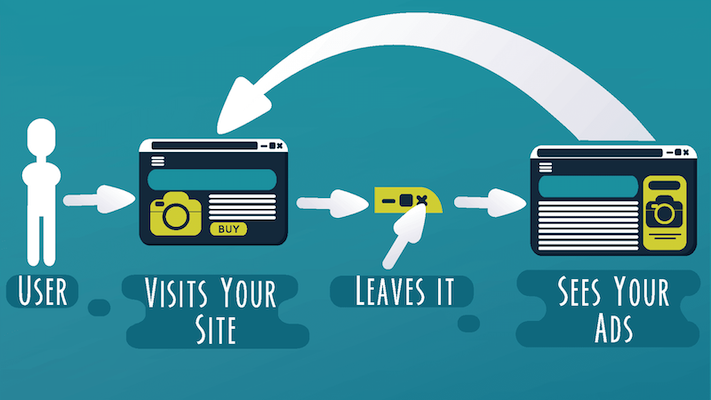The 20 most important e-commerce metrics: how to measure profitability?

Whether you’ve thrown yourself into the world of ecommerce right now or you’ve been selling on the internet for some time, one thing is clear: you need to know how to measure the profitability of your online store.
To get a complete view of your e-commerce and know how to improve your results, you need to keep track of the main data from your online business. We tell you the 20 ecommerce metrics you should keep in mind to measure the profitability of your store.
The 20 most important metrics to measure the profitability of your e-commerce
1) Traffic per device
For your customers to have a great experience in your online store, it’s important to know what types of devices they use to visit you. Therefore, when you are looking at the metrics of your e-commerce, don’t forget to segment traffic per device.
Today, your site should be well optimized for all types of mobile devices, including tablets. It is also essential that loading times be fast, so that the navigation experience is optimal in all circumstances.
2) Row rate
The bounce rate is the percentage of visitors leaving your website after seeing only one page. Normally, a high bounce rate tells us either that the content is not interesting to them or that there is some user experience problem, such as excessive page loading time or an unfriendly design.
3) Subscriptions to your email list
Email is one of the most powerful tools to promote your e-commerce and feed the relationship with your customers. Email marketing has a very high ROI and also allows you to organize your campaigns without relying on third-party platforms such as Google or Facebook.
To make an effective email marketing, the first step is to get users to subscribe to your mailing list. Therefore, your ecommerce metrics should include the net subscriber rate (subscribers less abandonment).
4) Click rate on your emails
This metric helps us assess the effectiveness of email marketing campaigns. It is the percentage of users who click on one of the links that contain your emails and therefore end up visiting your e-commerce. If this metric is too low, we will have to review the content and usability of our emails.
5) Return on advertising investment (ROAS)
The return on advertising investment (ROAS) helps us measure the effectiveness of different advertising campaigns. Thus, you will be able to know what the channels and means are that are most profitable for your e-commerce and distribute your budget accordingly to maximize the results.
6) Conversion rate for sale
The conversion rate for sales is the percentage of visitors who purchase in your online store. It is considered one of the most important ecommerce metrics.
According to Marketing Sherpa, most ecommerces have a conversion ratio of between 1 and 5%.
Most analysis tools will tell you the conversion rate, but you can also get it manually by dividing the number of users who have bought a product by the total number of visitors.
7) Average value of the order
This metric is the average amount a customer spends every time they buy in your e-commerce. Logically, we are interested in it being as high as possible, so to improve it, we can encourage purchases of additional products through cross-selling strategies and product recommendations.
8) Average life-long value
The average lifetime value is what a user spends in our store for as long as they are a brand customer. For example, if you make two purchases on average per year for 5 years and the average value of each purchase is 30 euros, the lifetime value of that customer will be 300 euros. We can improve this indicator through loyalty strategies that encourage repeated purchases.
9) Cost of acquiring a customer
To calculate how much it costs you to buy a new customer, you must divide the total marketing expense by the number of new customers for a certain period. It is also useful to calculate this metric for each marketing channel that you usually use.
Ideally, the cost of acquiring each customer should be less than the average amount of the order. In some cases, you can see that the first purchase is made at “loss” if we then manage to loyalize customers and that its average life-long value ends up being high.
(10) Income by source of traffic
Not all traffic to your e-commerce brings the same profitability. Some traffic sources make visitors more likely to become customers of your site, and it is important to know this fact to properly manage marketing budgets. Therefore, revenue per source of traffic should be among the top metrics of your e-commerce.
(11) Benefits margin
We’ve talked about the acquisition cost and the average order value before, but if you want your e-commerce to be profitable, you’ll have to spin thinner and calculate the real profit margin. To do this, you will have to subtract the cost of the products and the shipping costs from the total purchase amount.
(12) Best-performing products and categories
Filtering your ecommerce metrics will help you better understand your online store’s results to detect possible improvements. In particular, check out:
- Products with very good conversion ratios are for sale, but are not on the front pages of your e-commerce site.
- Products that are becoming a trend.
- Products that have gone out of fashion and your customers are no longer looking for.
- Products that are requested together very often.
- Products with a high rate of returns.
(13) Rate of abandonment of carts
On average, 2 out of 3 ecommerce customers leave their cart abandoned. Therefore, this is one of the main causes that makes brands stop making money.
The most frequent causes of cart abandonment are unexpected shipping costs and uncompetitive fares. Other common causes are complications in the payment and registration process, too slow shipping times, and a lack of payment options.
(14) Repeated retention rate/clients
Acquiring new customers is always more expensive than keeping them, so it’s interesting to know what the retention ratio of your online store is and work to improve it. To improve it, you need to work on the customer experience, product satisfaction, and long-term loyalty strategies.
(15) Rate of abandonment
The drop-out rate measures the number of customers lost over a certain period. The optimal percentage depends heavily on the sector, as in some cases it is easier than in others to acquire new customers or to retain them in the long term. In any case, it is important to keep a good track of this e-commerce metric and work on the customer experience so that it is always under control.
(16) Rate of returns and reimbursements
Over-frequent returns and refunds can become a serious problem for e-commerce.
Permissive repayment and return policies are a strong incentive to encourage customers to buy, but we need to make sure we can manage them without affecting e-commerce profitability.
In any case, we have to monitor this metric and take action in case the percentage of returns and refunds is too high. It is always advisable to make a filter by products to see if there are any particularly problematic ones.
(17) Attendance rate
The attendance rate is the percentage of e-commerce users who contact customer service. If it is very high, it will probably indicate that information on shipping policies, returns, means of payment, and others is not clear enough. Remember that your e-commerce should always include an FAQ section so users can resolve their doubts without contacting you.
18) Average incident resolution time
Very closely related to the previous one, this metric helps to evaluate the quality of customer service and ensure that we are offering a good experience that will help us generate repeat customers.
19) Net Promoter Score
The Net Promoter Score is a standard measure of customer satisfaction, calculated based on the likelihood that a user will recommend to their friends and family. If the Net Promoter Score is negative, we should focus on improving the user experience with products and the purchase process.
(20) Participation rate in loyalty programmes
Loyalty programs are a very popular strategy to encourage repeated purchases, increase average spending per purchase, and encourage recommendations. If you’ve designed a loyalty program and it’s not delivering the results you’d expect, you need to check if the incentives are interesting enough for your target audience and whether users find it easy to join.










